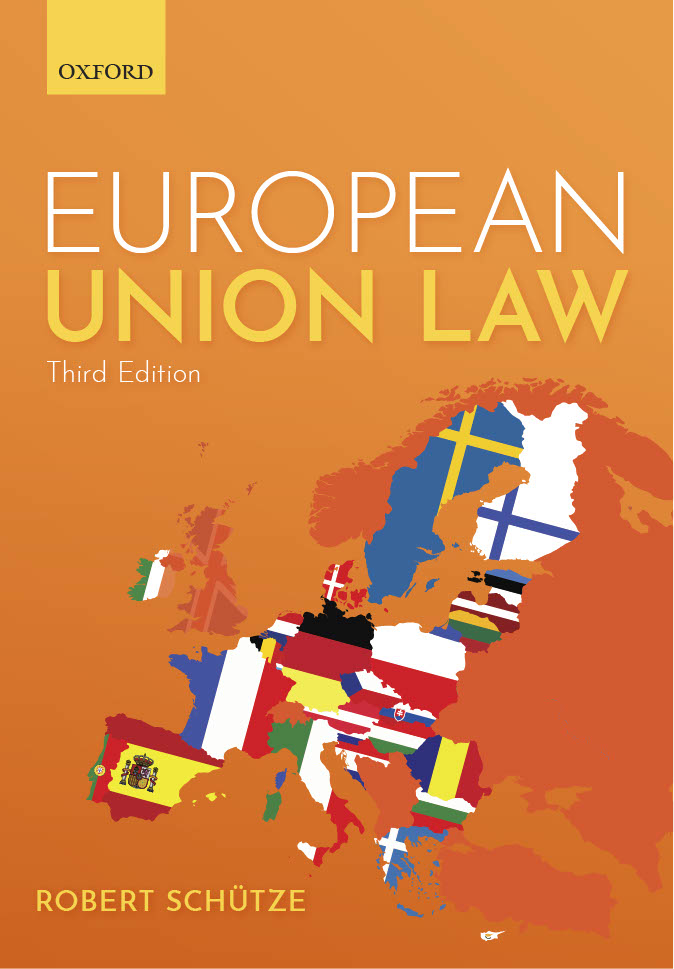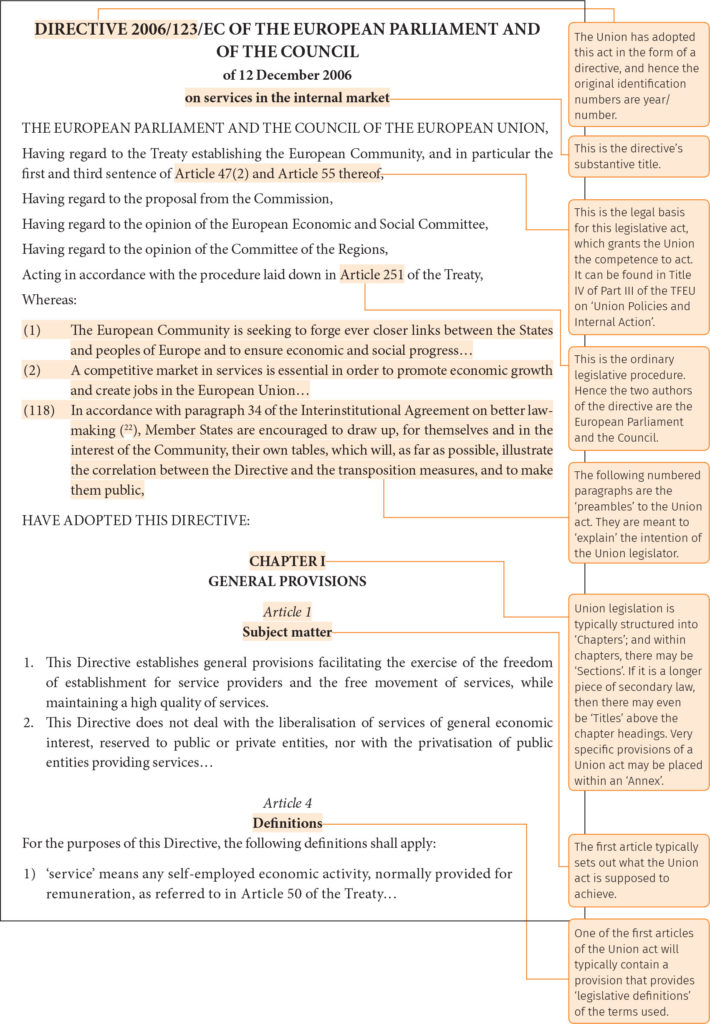The Union publishes all of its acts in the Official Journal of the European Union. Paper versions can be found in every library that houses a ‘European Documentation Centre’, but electronic versions are also openly available on the Union’s EUR-Lex website: http://eur-lex.europa.eu/oj/direct-access.html. The Union distinguishes between two Official Journal series: the L-series and the C-series. The former contains all legally binding acts adopted by the
Union (including its international agreements), while the latter publishes all other information and notices. Originally, only the paper version of the Official Journal was ‘authentic’; but since 1 July 2013, electronic versions of the Official Journal (e-OJ) are equally authentic and therefore endowed with formal legal force.
Union secondary law will first mention the instrument in which it is adopted. It will typically have the form of a ‘Regulation’, a ‘Directive’ or a ‘Decision’. This will be followed by two figures. In the past, where the Union act was a regulation, the figure was: number/year; while for directives and decisions this was inversed: year/number. However, since 2015, this has changed and all main Union instruments are now arranged by year/number.
Where the year and number are known for a given EU act, the easiest way to find it is to use the Union’s EU-lex search engine: http://eur-lex.europa.eu/homepage.html. Importantly, there may be two or more acts for a given number combination, especially where a ‘legislative’ act has been followed by a non-legislative act. For two types of non-legislative acts – namely: ‘delegated’ and ‘implementing’ acts – the EU Treaties require that they contain the word ‘delegated’ or ‘implementing’ in their title. This is to indicate – at first glance – that these executive acts have been adopted according to a particular decision-making procedure.
What is the structure of a piece of Union legislation? After its ‘Title’ there follows a brief summary of the decision-making procedure that led to the adoption of the act – including a reference to the legal competence on which it was based. Thereafter comes the ‘Preamble’, which sets out the reasons for which the Union act has been adopted. The content of the act is subsequently set out in various ‘articles’, which may be grouped into ‘Sections’ and ‘Chapters’. For very technical Union legislation, there may also be an Annex – which, like a ‘Schedule’ in a UK statute, adds detailed provisions ‘outside’ the core content of the act. To illustrate this legislative structure, let us take a closer look at the Services Directive as it would be published in the Official Journal.

